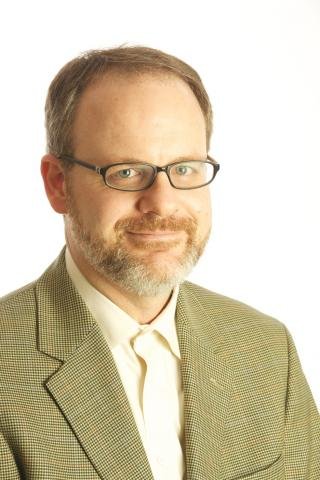Michael Dougherty, Chair of the Department of Psychology at the University of Maryland, shares tips and recommendations for modernizing tenure, promotion, review, and hiring. Dr. Dougherty developed these steps based off of his experience working with approximately 30 tenure-track faculty to revise the department’s tenure, promotion, review, and hiring policies.
Governance Structure: Campus policy: The University’s general campus policy provides a broad structure for promotion review, but field-specific review criteria are set by the unit, which in the case of a departmentalized college is at the department level. Criteria must receive formal approval from the next level (College). Specific requirements at the University level state that there must be criteria for the three categories of Research, Teaching, and Service. Process for tenure review is similar to other large universities described elsewhere.
Process undertaken for adopting new criteria for promotion and tenure guidelines:
Administrative Permissions. Consulted with Associate Provost for Faculty Affairs and Associate Dean for Faculty Affairs to get support and identify barriers. Gathering support at this level was useful for addressing faculty questions about administrative ‘permissions’.
Socialize and Educate. Department chair socialized key principles underlying the planned revisions of annual and P&T criteria. This included sharing scholarly works addressing topics on faculty review, issues of reproducibility in the field, roles of open scholarship, issues of equity and inclusion, and the scholarship of engagement. Chair linked these principles to the academic and research mission of the university. Example resources include National Academies reports, research literature on bibliometrics, consensus reports (e.g., DORA), articles examining inequities in NIH funding rates, and specific reports on engagement (Boyer, Kellogg commission).
Communication and Faculty Engagement. Department chair engaged faculty with the literature described in #2. Provided weekly or bi-weekly brief summaries as part of more general departmental communications, and held occasional brain storm sessions in faculty meetings to get faculty to identify activities they already engage in or could adopt that align with goals of eventual P&T reform efforts.
Policy Development. Convened small working group consisting of a member at each rank to work with Chair to develop the criteria. Chair wrote the first draft, and then used the committee to edit, refine, socialize, and advocate. Working group constructed of individuals who were broadly viewed as fair minded, likely to be open to new ways of thinking, but not necessarily obvious supporters of open scholarship (i.e. the persuadable).
Inclusion of Faculty Input. Working Group met separately with assistant, associate, and full professors (plus department chair) to get input and initial buy-in and socialize principles and policy. Critical for reducing ‘threat’. Solicited non-binding acceptance via straw vote at each level (initial commitment)
Final Editing and Approval. Penultimate draft edited in realtime in full faculty Zoom meeting, soliciting feedback and approval line-by-line (commitment, opportunity to object in public).
Final Vote. Vote for approval took place in anonymous vote via an online ballot.
Simultaneous Activities (reinforcing vectors)
Revised Annual/Merit Review. Worked with departmental executive committee to develop formal standardized process for annual/merit review to (a) address issues of research transparency, (b) incorporate explicit criteria for evaluation of teaching, research, and service aligned with P&T criteria, and (c) create scoring rubric. This was socialized and voted in via anonymous vote before our P&T criteria were finished.
Funding. Developed an internal funding mechanism with $200,000 devoted to supporting activities that align with goals of P&T criteria: engaged scholarship, development of OER material, open science pipeline development, inclusive practices.
Broader Socialization. Socialized revisions with dean’s office and other department chairs in college and assisted in running college-level workshop with associate dean (part of broader college effort to revisit P&T policies initiated by Dean and Associate Dean).
Job searches and annual review include rubrics. With open included with these rubrics.
Alzada Tipton, Provost and Dean of the Faculty, shares recommended steps for introducing the idea of modernizing tenure, promotion, review, and hiring with faculty at Whitman College. Dr. Tipton developed these steps based off of her experience at Whitman College, a liberal arts college.
Governance Structure: a centralized faculty review system, not one that takes place largely in departments, schools, or colleges.
Identify how the faculty evaluation standards get changed (for example, talk with the faculty member who spearheaded the change to add more attention to DEIA to the standards).
Identify faculty particularly interested in open scholarship (e.g., remember what they said on their annual faculty activity report or ask somebody who reads the activity report if it’s not you).
Talk with those faculty and get them in your corner.
Approach faculty leadership (institutional relations committee, senate, department chairs) and get their blessing and/or have them write to the tenure and promotion committee.
Ask the tenure and promotion committee to revisit the standards, or ask for an ad hoc committee to be formed to re-visit the standards.
Ask faculty leadership to offer opportunities for discussion of revised standards for the whole faculty multiple times.
Put it to a vote when everybody is tired of continuing to talk about it.
Rebecca Saxe, professor of cognitive neuroscience and associate Dean of Science at MIT, shares tips for modernizing tenure, promotion, review, and hiring. Dr. Saxe developed these steps based off of her experience working with faculty at MIT.
Governance structure: review initially starts in committees in departments, with layers of oversight from the whole department, then school, then university.
Find the written templates and guidance for the promotion process, and look at the language. Some of this is given to faculty, but much of the template is owned and used by the administrative staff within the departments that prepare the packages.
Identify opportunities to add additional indicators of ‘excellence’ or ‘impact’, in the guidance on CV formatting (e.g. a specific section for datasets, github repositories, patents, etc), inclusion of preprints in the package and publications list.
Find the template for the request for letters sent to external reviewers. This may be variable across departments and committees, or shared. Raise the possibility of editing this letter to align across departments and committee, and specifically ask about e.g. openness, rigor, and transparency.
Add language referring to values of openness, rigor, and transparency to job ads.
Encourage champions of openness within a department to start raising the question of (e.g.) open datasets in each faculty meeting that discusses a proposed hire (shift the descriptive norms, raise the salience).
Invite external consultants to discuss aligning faculty promotion processes with values of openness, rigor and transparency.
Philip E. Bourne, Stephenson Founding Dean School of Data Science, shares recommended steps for developing open scholarship guidance in tenure, promotion, review, and hiring policies when starting a new school at the University of Virginia.
Governance structure: President - Provost - Dean - Dean’s Cabinet - Academic Committee - Faculty at large - Ops Team.
There is advantage in starting a school from scratch - no entrenched culture.
Dean drafted an Open Scholarship policy.
Reviewed, discussed, and edited by a faculty subcommittee.
Presented to all faculty, and made further modifications.
Adopted by faculty and made public - states open access explicitly, but also speaks to more research products.
Independently, the policy was put to the faculty senate who adopted it.
Received some publicity from SPARC.
Led to Office of the Provost considering it as university-wide policy.
At the same time, an Open Scholarship Working Group was assembled with representation broadly across schools, the library, and Center for Open Science.
The work of the OSWG continues in tandem with HELIOS Open.




